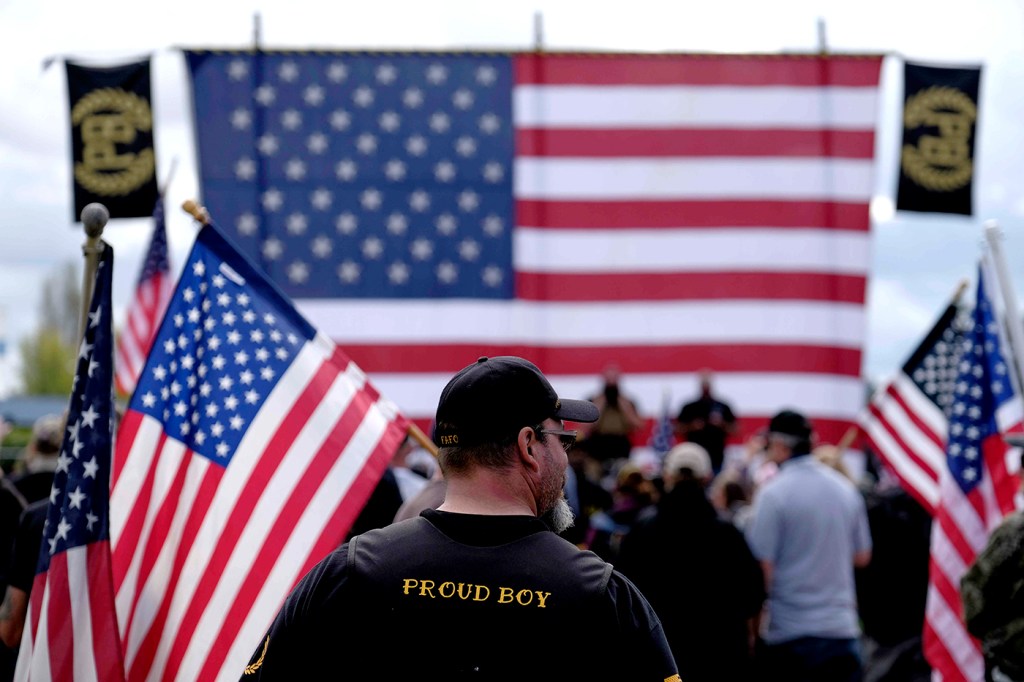Was ‘stand back and stand by’ a rallying cry for the Proud Boys? Here’s how to deflate extremist fringe groups.

The Proud Boys, a far-right extremist group designated by the Southern Poverty Law Center as a hate group, received a flood of new members in the first week of October. Why? The group was emboldened by President Donald Trump’s instructions to “stand back and stand by” during the debate on Sept. 29, says Gordana Rabrenovic, an associate professor of sociology at Northeastern University who studies intergroup violence and conflict.

Gordana Rabrenovic is an associate professor of sociology in the College of Social Sciences and Humanities. Photo by Matthew Modoono/Northeastern University
Trump appeared to walk back the comment the day after the debate. He told reporters gathered outside Marine One that he didn’t know who the Proud Boys were but that they should “stand down, let law enforcement do their work,” according to a White House transcript of the remarks.
Intended or not, Trump’s remarks on national television—which were part of his response to a question about whether he would denounce white supremacy—were taken up by members of the group as a rallying cry.
“If Trump said something that the Proud Boys saw as validation of them, it doesn’t matter what he meant. It matters how they perceived it,” says Rabrenovic, who is also director of the university’s Brudnick Center on Violence and Conflict.
“And what we see is that the Proud Boys felt validated, that they’re seen as legitimate, and that’s what’s dangerous,” she says.
Instead, the way to deflate fringe groups such as the Proud Boys is to “categorically reject” division and violence of all kinds, Rabrenovic says. Anything short of a round denouncement can be taken as silent permission, she adds.
“When leaders don’t play that role, it gives legitimacy to people who might not have necessarily thought they had an avenue to power,” she says.
After all, these groups are called “fringe” for a reason—they typically don’t have broad exposure or support among the general population. And, Rabrenovic says, without the spotlight, they tend to stay that way.
At a time when the U.S. and world are facing existential threats including systemic racism, climate change, and a deadly pandemic, Rabrenovic says that giving oxygen to extremist groups serves only to divide and distract people from focusing on the big picture.
“These groups divide us instead of helping us to find common ground, and we just don’t have time,” she says.
For media inquiries, please contact Mike Woeste at m.woeste@northeastern.edu or 617-373-5718.




